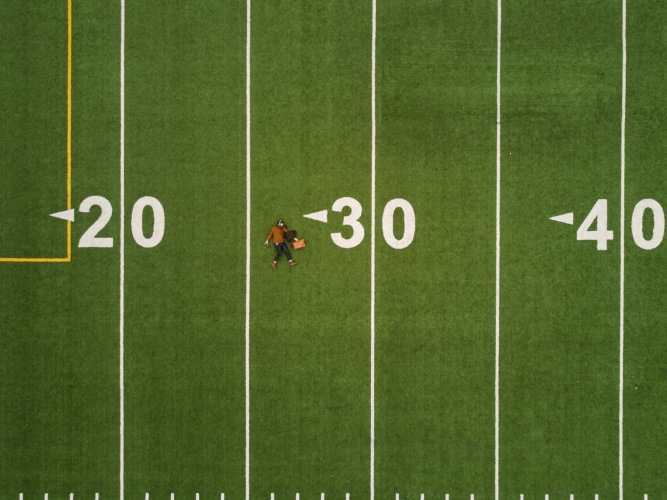Limitations on Your Benefits
The calculation of your lifetime monthly retirement allowance from ACERA may be limited by one or more of the following.
1. Your Retirement Allowance is Capped at 100% of Your Highest Average Monthly Salary
Your monthly retirement allowance cannot be more than your Highest Average Monthly Salary.
2. Your Retirement Allowance is Capped at the IRS 415(b) Limit
Section 415(b) of the Internal Revenue Code limits the benefit amount qualified pension plans, including ACERA, may pay their retirees. The IRS periodically announces adjustments to the limit, which is a maximum of $280,000 for 2025 and $290,000 for 2026.
For members who entered ACERA between January 1, 1990 and December 31, 2012, or those who receive a benefit enhancement on or after this date, ACERA cannot pay out more than the limit in retirement allowance payments. (A benefit enhancement can occur when a member whose position was general is changed to safety (Probation Officers), or for members retiring with a benefit enhancement such as the 3% at 50 safety member benefit formula. The limit is set by federal law and is periodically adjusted for inflation.) Lower limits may apply to general members who retire under age 65.
Because ACERA is a qualified retirement plan, it is required to impose the limitations contained in Section 415. However, Section 415(m) of the Internal Revenue Code allows members subject to the 415(b) limit to receive a separate benefit payment directly from the employer for the difference between the member’s calculated benefit amount and the 415(b) limit.
This cap does apply to Tier 4 members. See #4 at the bottom for the the Tier 4 cap.
See also the 415(b) Limit FAQ.
3. Your Highest Average Monthly Salary Calculation is Capped at the IRS 401(a)(17) Limit
Section 401(a)(17) of the Internal Revenue Code limits the salary base that qualified pension plans, including ACERA, may use in the calculation of benefits. This means that ACERA caps your highest average monthly salary that we use in your retirement calculation at the 401(a)(17). This affects members with an entry date in ACERA membership between January 1, 1996 and December 31, 2012. Those with an entry date prior to January 1, 1996 are “grandfathered” and their final average salary will not be subject to this limit. The limit is set by federal law and the IRS periodically announces inflation adjustments to the limit, which is currently $350,000 for 2025 and $360,000 for 2026.
4. Tier 4 Members’ Highest Average Monthly Salary Calculations are Capped
For Tier 4 general and safety members (ACERA entry dates on or after January 1, 2013), your highest average monthly salary that we use in your retirement calculation is capped at the Social Security Wage Index Limit as calculated by the California Actuarial Advisory Panel. The current annual caps are below.
Most members never reach this limit, but if your year-to-date salary goes over it, we only take retirement contributions from your pay up to that capped amount. Once you hit the cap—whether it’s in July, October, or any other month—we automatically stop deducting contributions for the rest of the calendar year. Your contributions automatically start again on January 1.
2025 Caps
-
$155,081 annual salary for tier 4 general members (participating in Social Security)
-
$186,096 annual salary for tier 4 safety members (not covered by Social Security)
2026 Caps
-
$159,733 annual salary for tier 4 general members (participating in Social Security)
-
$191,679 annual salary for tier 4 safety members (not covered by Social Security)
5. You Will Forfeit Some or All of Your Pension if You’re Convicted of a Felony Arising Out of Your Work
For details, see ACERA’s Felony Forfeiture Policy.
415(b) Limit FAQ
1. What is the IRS 415(b) limit?
The IRS 415(b) limit is a federal cap on the total annual retirement allowance that qualified pension plans, including ACERA, may pay to retirees. The limit is periodically adjusted by the IRS. For 2025, the maximum allowable benefit is $280,000 per year.
2. Is the limit constant?
No, the IRS adjusts the limit periodically, usually each year, to account for inflation. The limit for 2025 is $280,000, but it may change in future years.
3. Does the limit apply to all members?
No, the IRS 415(b) limit applies only to certain members:
- Members who entered ACERA between January 1, 1990, and December 31, 2012.
- Members who receive a benefit enhancement on or after October 14, 1987.
Additionally, some members who retire before age 65 may have a lower limit.
4. What is a benefit enhancement or enhancement in the benefit formula?
A benefit enhancement occurs when a member’s retirement benefit calculation is enhanced. This happens in situations such as:
- A general member’s position being reclassified as safety (e.g., Probation Officers).
- A member retiring under an enhanced benefit formula, such as the 3% at 50 safety member formula.
If you receive an enhanced benefit on or after October 17, 1987, you may be subject to the IRS 415(b) limit.
5. Is the limit the same for general and safety members?
No, general and safety members may have different 415(b) limits. Lower limits may apply to general members who retire before age 65. Safety members generally have a higher limit due to different retirement rules.
6. Who qualifies as an IRS safety member?
Safety members include those in job classifications that meet IRS criteria for safety personnel, such as law enforcement officers and firefighters. 15 years of service credit in one or more of those job classifications is required for qualification as an IRS safety member.
7. Does everyone with the same classification and retirement age have the same limit?
Not necessarily. Other factors, such as when you entered ACERA and whether you receive a benefit enhancement, may impact your specific limit.
8. What are these other factors?
Factors that may impact your 415(b) limit include:
- After-tax contributions, which must be factored at their present value over the lifetime of the benefit (determined actuarily).
- Contributions based on service purchased, if post-tax dollars are used.
- Rollovers from 401(k), 401(k), 403B, 457B, and traditional IRAs
- The “10-year rule” (if a person has less than 10 years of membership, the benefit limit is prorated based on the percentage of 10 years the person has).
- Beneficiary limits based on the original member’s benefit limit.
- Multiple survivor benefits, were all of the combined benefits must be totaled and then compared to the limit.
- Benefit options. If they are not equivalent to the IRS’ single life annuity, the limits will vary even by options selected. Otherwise, the limits are the same as the unmodified option.
9. I am divorced. How does the 415(b) limit apply to me?
The 415(b) limit applies to the combined amount payable to both the member and their former spouse/domestic partner. The total benefit paid to both individuals cannot exceed $280,000 in 2025 (or a lower amount for some members who retire before age 65).
ACERA will apportion the limit based on each person’s share of the total benefit. For example, if both the member and the former spouse/domestic partner each receive 50% of the retirement benefit, the 415(b) limit is also split 50/50 between them.
Any portion of the benefit that exceeds the IRS limit will be paid through the County’s replacement benefits plan.
10. Does the limit apply to my domestic partnership?
Some Federal government agencies do not recognize domestic partnerships. The state of California, the County of Alameda, and ACERA, however, do recognize registered domestic partnerships. Contact ACERA about the applicability of the 415(b) limit to your domestic partnership.
11. If my benefit is not limited when I retire, could the limit apply to me at a later date?
Yes, it is possible. If your retirement allowance increases due to a cost-of-living adjustment (COLA) or a benefit recalculation, it could exceed the IRS 415(b) limit in a future year.
12. If my benefit is limited, and the county is required to pay me from the replacement benefit plan, how will the county know what to pay me?
ACERA calculates the portion of your retirement benefit that exceeds the IRS 415(b) limit and provides this information to the County, which is responsible for making up the difference through a separate payment.
13. How will the County pay me?
Once you reach the limit for the year, you will begin to receive a check (or an Electronic Fund Transfer) from both ACERA and the County. The total gross amount of the combined payments will equal the benefit you are entitled to receive under your ACERA benefit formula. The net amount may differ due to your tax withholding.
14. What happens to deductions from my benefit for things like healthcare premiums and retiree organization dues?
ACERA’s policy requires continuous payment of a benefit sufficient to accommodate payroll deductions. We will reserve enough benefit dollars below the limit to permit payroll deductions.
15. Can’t ACERA simply ignore these federal limits?
No, ACERA is a qualified pension plan and is legally required to follow IRS regulations, including the 415(b) limit. However, Section 415(m) allows for a separate payment from the employer to cover any excess benefit amount.




